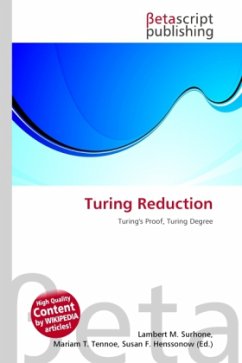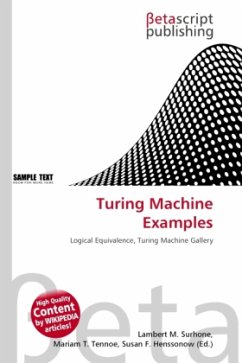High Quality Content by WIKIPEDIA articles! In computability theory, a Turing reduction from a problem A to a problem B, named after Alan Turing, is a reduction which solves A, assuming B is already known (Rogers 1967, Soare 1987). It can be understood as an algorithm that could be used to solve A if it had available to it a subroutine for solving B. More formally, a Turing reduction is a function computable by an oracle machine with an oracle for B. Turing reductions can be applied to both decision problems and function problems. If a Turing reduction of A to B exists then every algorithm for B can be used to produce an algorithm for A, by inserting the algorithm for B at each place where the oracle machine computing A queries the oracle for B. However, because the oracle machine may query the oracle a large number of times, the resulting algorithm may require more time asymptotically than either M or the oracle machine, and may require as much space as both together.
Bitte wählen Sie Ihr Anliegen aus.
Rechnungen
Retourenschein anfordern
Bestellstatus
Storno








